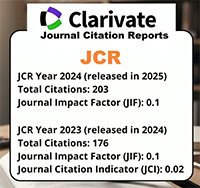Human Infection by Fasciola Hepatica in Venezuela: Report of a Geriatric Case
Resumen
A new case of human infection due to Fasciola hepatica is reported in the Venezuelan parasitological literature. The patient is an 81-year-old female asymptomatic, with an eosinophilia of 21% and eritrosedimentation rate of 26 mm/h and was found during a routine check up. These values were normal at the time of treatment (4 months later), as were several tests of hepatic function, blood chemistry and peripheral blood haematological values. The number of eggs of the parasite were between 90 and 130/g of faeces. The patient was successfully treated with the human formulation of triclabendazole at 2 single doses of 10mg/kg, each separated by 24h. The same laboratory tests mentioned above did not show modifications, except for a slight increase in the eosinophil counts at 2 and 11 days and erythrosedimentation rate at 11 days post-treatment. Coproparasitological observations carried out at 12, 18, 60 and 120 days post-treatment were negative. No clinical symptoms were registered up to 2 months after treatment. The patient most probably acquired the infection at home through the ingestion of commercially available lettuce from an endemic area of bovine fascioliasis, very distant from home, and between 4 and 7 months previous to treatment. We stress the need to investigate F. hepatica infections which he been neglected, probably because of limited knowledge by health workers, lack of specific symptoms and absence of more sensitive diagnostic procedures




















